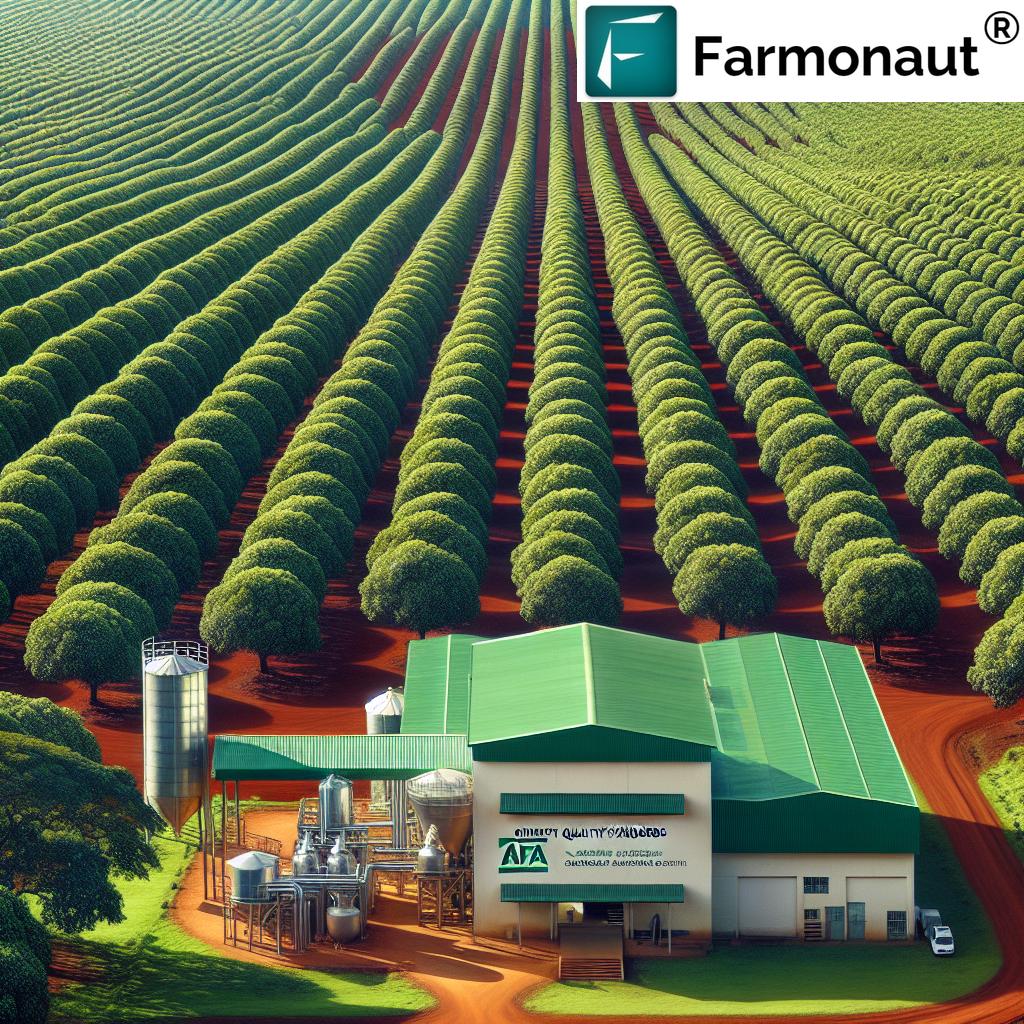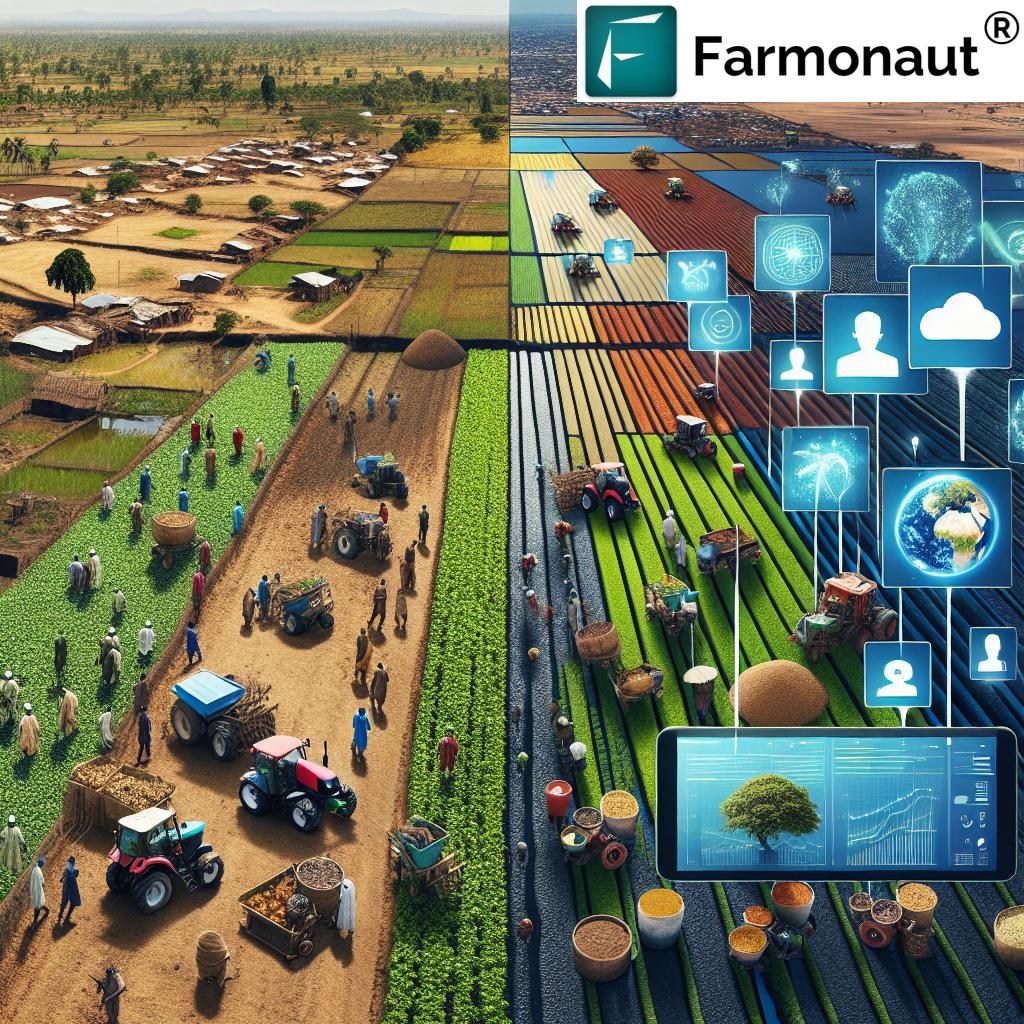Cacao Farming Côte d’Ivoire: 5 Agriculture Farming Models
The Importance of Cacao Farming in Côte d’Ivoire
Côte d’Ivoire, the leading producer of cacao, contributing nearly 40% of the global supply, commands an unrivaled position in the world’s chocolate supply chains. As of 2025, cacao farming in this West African nation is far more than an agricultural endeavor; it is the economic heartbeat that drives rural economies, sustains livelihoods, and underpins national export revenues.
Let’s consider key data points to understand its role:
- Cacao Côte d’Ivoire accounts for about 20% of the nation’s GDP.
- Over two million farmers, often smallholder producers, depend directly on cacao cultivation—working plots of 1–3 hectares.
- The crop supports rural development and contributes substantially to foreign exchange inflows.
Given these realities, the vitality and stability of Côte d’Ivoire’s economy are directly linked to how the sector adapts and optimizes its cacao agriculture farming models amid evolving challenges.
Challenges Facing Traditional Cacao Farming Models
For decades, traditional cacao farming models in Côte d’Ivoire were characterized by:
- Simple, conventional monoculture systems
- Low-input, manual management techniques
- Reliance on time-honored practices passed through generations
While these models enabled rapid expansion and production growth, several major issues have emerged—some threatening the future of cacao farming itself:
- Soil Degradation: Continuous cultivation without adequate soil management led to depleted nutrients, reducing productivity over time.
- Climate Vulnerability: Changing climate patterns—rising temperatures, unpredictable rainfall—have made cacao farming unpredictable, affecting flowering and pod development and intensifying crop stress.
- Pests and Diseases: Viruses like Cocoa Swollen Shoot Virus (CSSV) and fungal infections like black pod disease continue to threaten sustained yields and the quality of harvested beans.
- Deforestation: Expansion of cacao plantations has often occurred at the expense of forest cover, furthering biodiversity losses and diminishing ecosystem resilience.
- Socioeconomic Issues: Social challenges include reliance on child labor, low and fluctuating farmer incomes, and inadequate market access, each drawing significant international scrutiny.
These obstacles make it essential for Côte d’Ivoire’s cacao sector to adopt sustainable agriculture farming models that focus on soil health, climate adaptation, pest management, and the reinforcement of rural economies.
5 Evolving Agriculture Farming Models for Sustainable Cacao in Côte d’Ivoire
The pressures of climate change, environmental concerns, and market fluctuations have triggered a paradigm shift. Today, five agriculture farming models are emerging as the most prominent and effective approaches to cacao farming in Côte d’Ivoire. Each comes with unique implications for productivity, resilience, and sustainability.
1. Traditional Monoculture (Conventional Model)
This model—still in use in parts of Côte d’Ivoire—is characterized by fields planted exclusively with cacao trees. Management relies on chemical inputs and a continuous cacao production cycle, often with minimal crop rotation or biodiversity. Its importance lies in its rapid yield potential, but severe issues like soil degradation, vulnerability to pests and diseases, and high environmental impact have made it less attractive for sustainable future.
- Advantages: Simplicity, short-term yield maximization, familiarity for most smallholder farmers.
- Drawbacks: Accelerated soil nutrient loss, poor biodiversity support, intensification of pest and disease cycles, increased pesticide/fertilizer dependency.
2. Agroforestry Systems
Agroforestry integrates cacao trees with shade trees (e.g., nitrogen-fixing species, native hardwoods, and fruit trees), restoring ecological balance, improving soil fertility, and moderating microclimates for enhanced crop resilience.
- Benefits: Enhanced soil and water conservation, increased crop and ecosystem biodiversity, secondary income streams (timber, fruit, medicinal plants), and reduced deforestation.
- Challenges: Requires more intensive management, up-front investment in shade trees, slower initial cacao yields.
Learn more about solutions for large-scale agroforestry and satellite-based smart management with Farmonaut’s Large Scale Farm Management Tools.
3. Organic Farming Model
Organic cacao farming bans synthetic pesticides, herbicides, and chemical fertilizers in favor of natural pest and disease management solutions (mulching, compost application, beneficial predator insects). The focus is on replenishing soil nutrients and achieving sustainability through ecological balance.
- Advantages: Premium market access, higher export prices, and healthier working/living conditions for rural farmers.
- Barriers: Certification costs, lower short-term yields, and in some cases, knowledge gaps in organic practices.
Discover Farmonaut’s environmental tracking solutions for sustainable farm monitoring and carbon footprinting, which can benefit organic cacao plantations.
4. Cooperative-Based Farming
This model unites smallholders through farmer organizations, cooperatives, or associations. By pooling resources and sharing knowledge, cooperatives improve access to inputs, quality planting material, shared infrastructure, better market access, and negotiation power.
- Key Aspects: Training in best practices, bulk purchasing of inputs, group sale of harvested cacao to command higher prices, and fostering community cohesion.
- Obstacles: Upfront investment in training programs, organizational governance issues, and managing fair member participation.
Cooperatives increasingly use digital record keeping and transparent supply chain tools. Blockchain traceability tools—like those provided by Farmonaut—assist in recording harvests, verifying certification, and increasing trust for international buyers.
5. Technologically Enhanced (Digital & Precision) Farming
Côte d’Ivoire’s cacao sector is rapidly modernizing through digital agriculture, satellite technology, and data-driven management. Farmers use mobile apps and smart mapping tools for:
- Monitoring field-level soil and crop health
- AI-based weather and risk forecasting
- Traceability and transparent payment systems
- Precision water and fertilizer management based on actual need
Access to real-time insights gives farmers a decisive edge in maximizing yields, optimizing input use, adapting to climate change, and directly accessing international markets.
Explore Farmonaut’s crop, resource & fleet management solutions—from large scale plantation advisory for estate managers to satellite-based fleet management for cooperative logistics.
Common digital platforms also empower farmers with transparent supply chain certification and increase their leverage when negotiating cacao prices in volatile global markets.
Comparison of Cacao Farming Models in Côte d’Ivoire (2025 Estimates)
| Farming Model Type | Estimated Yield per Hectare (kg/ha) | Sustainability Rating (1–5) | Environmental Impact | Adoption Rate (% of Farms) | Initial Investment (USD/ha) | Key Challenges |
|---|---|---|---|---|---|---|
| Monoculture | 850 – 1,250 | 1 | High | 18% | $400 – $800 | Soil depletion, pest/disease cycles, market fluctuations |
| Agroforestry | 850 – 1,100 | 5 | Low | 42% | $700 – $1,200 | Higher labor/management needs, initial cost |
| Organic Farming | 700 – 950 | 5 | Low | 8% | $900 – $1,300 | Certification barriers, market premiums, lower initial yield |
| Cooperative-based | 900 – 1,200 | 4 | Medium | 20% | $600 – $1,000 | Group governance, upfront organization cost |
| Technologically Enhanced | 1,100 – 1,350 | 5 | Low | 12% | $1,200 – $2,000 | Tech access, digital literacy, initial capital |
Policy and Institutional Support for Sustainable Cacao Farming
The Ivorian government has recognized that cocoa, as a flagship commodity, requires modern interventions. Through the National Cacao Sector Development Program, the government invests in:
- Research and development of disease-resistant and climate-resilient varieties
- Widespread farmer training and extension services for modern best practices (including CSA: climate-smart agriculture)
- Quality input access—certified seeds, sustainable fertilizers, ecological pest control agents
- Infrastructure upgrades for logistics and farm-to-market access
Additionally, public-private initiatives and funding boosts are mobilizing to combat deforestation, scale up sustainable agriculture models, and ensure Côte d’Ivoire’s cacao sector remains competitive amid global sustainability imperatives.
Digital & Technological Innovations in Cacao Côte d’Ivoire
The future of cacao farming rests on digital and technological advances. Here’s how modern tech empowers farmers, improves sustainability, and strengthens the sector:
- Satellites & Remote Sensing: Farmers scan changes in vegetation, soil health, and water stress before problems become visible, enabling precision intervention.
- AI Advisory & Early Warning: Artificial intelligence helps forecast pest outbreaks, climate extremes, and schedules for optimal input management.
- Blockchain Traceability: Digital chains record cacao’s journey “from pod to export,” reassuring international buyers of ethical origin and compliance with fair trade practices. Read about Farmonaut’s blockchain traceability platform.
- Real-time Monitoring Tools: Adoption of digital apps and mobile dashboards for farm record-keeping, quality control, and access to training resources.
- Input Procurement & Financing: Satellite-based verification—such as provided by Farmonaut’s crop loan & insurance solutions—helps farmers secure affordable financing and streamlined insurance approvals.
Plus, with Farmonaut’s API and Developer Documentation, agricultural businesses and farm-tech developers gain easy access to satellite and AI-powered data feeds to drive their own custom systems for farm management and traceability.
Outlook for 2025 and Beyond: Shaping the Future of Cacao Farming
In 2025, Côte d’Ivoire stands at the crossroads of agricultural transformation. Sustainability is no longer optional; climate imperatives, shifting markets, and international sustainability standards are rapidly changing expectations for the cacao sector. For farmers, adopting new models and technologies offers fresh opportunities:
- Certification and Sustainable Supply Chains: Uptake of schemes like Fair Trade and Rainforest Alliance is increasing, enabling premium pricing, financing access, and international market entry.
- Soil & Resource Management: Satellite-powered tools and data-driven advisory ensure inputs are optimized, environmental footprints shrink, and yields stabilize against climate shocks.
- Integrated Pest and Disease Management: Early-warning systems and AI-based risk monitoring strengthen resilience against CSSV, black pod, and other pests.
- CSA – Climate-Smart Agriculture: Training programs are expanding, supporting farmers to adopt drought-resistant varieties, conservational practices, and digital tools for adaptation.
- Economic Stability: When climate and market fluctuations strike, diversified agriculture systems (like agroforestry or organic) mitigate risks and protect rural incomes.
As global demand for ethically sourced chocolate intensifies, Côte d’Ivoire’s leadership will depend on making sustainable, scalable models and innovations accessible to all levels of rural farming communities.
How Farmonaut Empowers Sustainable Cacao Côte d’Ivoire
At Farmonaut, we are committed to making satellite and data-driven insights accessible and affordable for agriculture worldwide, and particularly impactful in cacao Côte d’Ivoire. Our core offerings for the current and future models of cacao farming include:
- Satellite-Based Crop & Soil Monitoring: Real-time, multispectral insights for soil health, vegetation vigor (NDVI), and water status for more responsive and optimized management.
- AI-Powered Advisory Systems: Our Jeevn AI analyzes satellite and field data to provide tailored recommendations for input use, pest/disease management, and climate adaptation for cacao farmers.
- Blockchain Traceability: A transparent chain for every batch of cacao beans, supporting certification and ethical supply claims.
- Resource & Fleet Management: Tools for cooperative logistics and large plantation oversight—improving operational efficiency and lowering costs.
- Environmental Impact Tools: Actionable analytics for monitoring carbon footprint and biodiversity outcomes. See more on our carbon footprinting solutions.
These solutions are flexible and scalable—from individual smallholders to cooperative organizations and agribusinesses, allowing every stakeholder in Côte d’Ivoire’s cacao sector to participate in the future of sustainable agriculture.
We also offer our SaaS solutions on a straightforward subscription basis, accessible via web dashboard, Android/iOS apps, and via API integration for agri-businesses and agritech professionals.
Start transforming your cacao farm or agricultural operation today with Farmonaut’s precision agriculture technologies!
Frequently Asked Questions (FAQ)
What farming model is most sustainable for cacao in Côte d’Ivoire?
Agroforestry and organic farming models rank highest for sustainability. They restore soil health, promote biodiversity, reduce chemical reliance, and buffer cacao trees from climate extremes. Technologically enhanced models provide additional sustainability through optimized resource use and precision input management.
Are digital tools accessible to smallholder cacao farmers?
Yes. Increasingly, mobile technology and satellite-based advisory platforms—like those we provide at Farmonaut—are becoming more accessible and affordable, even for small farms. Android, iOS, and browser apps allow farmers to start with low-cost subscriptions and scale up as needed.
Why is certification important in cacao farming?
Certification (such as Fair Trade or Rainforest Alliance) ensures compliance with sustainability and ethical production standards. It helps farmers secure premium pricing, direct access to international markets, and improved financing opportunities.
How does satellite monitoring improve cacao yields?
Satellite monitoring provides real-time insights on vegetation health, soil moisture, and crop stress. This enables farmers to take proactive measures—optimizing water, fertilizer, and disease management for maximum, stable yields.
What role does the government play in cacao farming Côte d’Ivoire?
The government leads in setting quality standards, research, farmer training, and driving the adoption of sustainable farming models. Policy measures now increasingly target climate adaptation, deforestation prevention, and supply chain transparency.
Conclusion: Cacao Farming Côte d’Ivoire for Sustainable Growth in 2025
The transformation of cacao farming in Côte d’Ivoire toward sustainable, climate-smart agriculture is a pivotal development for food security, rural development, and global commodity chains. As we look to 2025 and beyond, an integrated approach—combining agroforestry, digital precision agriculture, cooperative models, organic practices, and robust government support—will determine the nation’s continued status as a leading cacao producer.
Sustainability is the watchword: balanced progress on economic, environmental, and technological fronts will ensure that future generations of Ivorian cacao farmers continue to thrive, delivering the world’s chocolate in ways that steward natural resources and strengthen rural prosperity.
With smart tools, cutting-edge analytics, and a spirit of continuous learning, the sector is truly ready for a new era—one where Côte d’Ivoire’s cacao remains a beacon of innovation, quality, and sustainability on the international stage.













